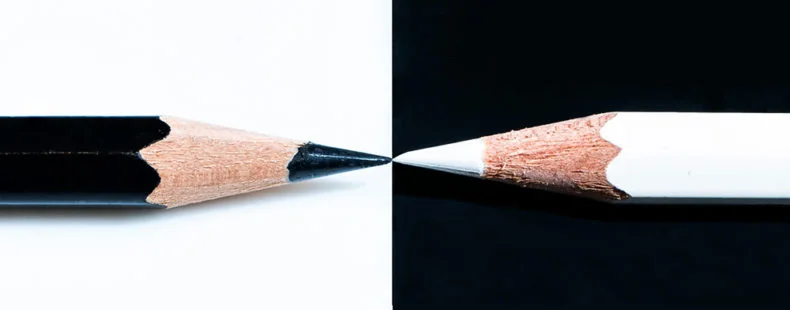
In my previous post I mentioned the automatically assumed relationship between quality and price. I wrote the article to highlight the fact that most perceived differences in quality might be a mere marketing trick, rather than an actual difference in material or functional quality. The article did not deny there being a relationship between price and quality. This relationship often does exist. In this article, I will dive into what happens when the relationship between price and quality is preserved, and we choose on purpose to buy cheap.
Buying Cheap, Again One comment I got on the previous post is the fact that if you buy cheap, you end up buying more often. This quite regularly holds true, if the product or service in question is used rather frequently or intensely. For example, a rather thin, half polyester hoodie is not going to last as long as a nice, thick, woollen, maybe even cashmere hoodie. This is not because of brand, label or marketing. I did not mention brands in that sentence on purpose. The latter hoodie is of obviously higher quality. It will show in the first wear and it will continue to show increasingly, as the lower quality hoodie deters and becomes more and more unflattering and unwearable.
The scenario described above might not seem an issue to you. If you need a hoodie for a couple of occasions and that’s it, I wouldn’t spend a lot of money either. What is the point of spending a lot of money on something you know you’ll barely wear? With this reasoning in mind, it has always baffled me that people spend so much money on occasion-related clothes such as prom dresses. You will not wear this more than five times. That does not warrant the immense price tag. It is similar with wedding dresses. I really don’t see the need to put down thousands for that either.
I have slightly gone off on a tangent, let’s get back into the original story. When buying something low quality, knowing you will in fact use it often, can massively backfire. You will find yourself needing to buy a new hoodie every year when temperatures start to drop. The hoodie you bought last year is no longer appealing to you. Whereas, higher quality and often more expensive hoodies would still look really nice as they have a much longer lifecycle. Granted of course, that what you spend extra money on was quality and not brand related.
The same goes for a lot of technology. Ignoring the brand and the marketing ploys, looking purely at material and functional characteristics will tell you how high quality a product is. It will tell you how fast, durable, diverse etc. a product can be. Phones, laptops, computers, tv’s, but also cars and electronic kitchen utensils tend to adhere to this system. Buying cheap is likely to end up costing more due to replacement costs. And you know it’s time to stop when you’ve had to replace your laptop three times in four years….
When faced with frequent or intense usage, it is smarter to invest than to save. Because that ensures less spending in the future. Of course, you will have to guarantee frequent or intense usage. Buying a €500, multi-functional, high quality food processor won’t really be worth it, if it’s sitting in a cupboard, never seeing the light of day.
Price ≠ Cost So far I have only focussed on the cost of buying cheap when it comes to replacing things more often. I have ignored whether the cheap price is even enough to cover the costs of the products.
There is more to a product or service than its monetary production costs. A lot of production has externalities. An externality of flights for example, is their kerosene output. Sure, it is unsurprising that the airfare is partly based on a calculation of the amount of kerosene per passenger, but are you aware if the ultimate impact it has? Kerosene is bad for the environment. Any kind of fuel output when not coming from a sustainable resource such as wind, water and sunlight, is bad for the environment. Do you honestly belief paying €50 for a cheap return flight from Heathrow to Athens covers the impact the flight’s kerosene output has on the environment? Please be honest to yourself. It is not covered in that price. As a result it is not covered at all. You save a bit of money now. But someone is going to pay for the damage done to the planet eventually.
The awful thing is I understand it. I have been a broke teenager, then a broke student. Everyone wants to be “ballin’ on a budget,” myself included. I mean there is some serious appeal to it. With stuff like Airbnb, spending less is a feasibility, without externalities to the natural environment, as far as I am aware. The sharing economy, that things like Airbnb are associated with, promotes cooperation leading to cheaper products and services. This is a development I am all for. You can have more for less. Awesome!
But this doesn’t work for all products and services. Coming back again to the increased frequency of buying products because we need to replace them. That means increased production. Production that is not necessarily ethical, fair or morally right. We have been made aware of the things that go on in sweatshops. The insane working hours, the unhealthy and often dangerous environment, the poisonous chemicals people are forced to work with and the unimaginable low wage these people work for. It is often cheaper clothes that exploit others the most. Is it really going to break the bank to shop somewhere that can prove it’s ethically sourced? Often the products are higher quality and need less frequent replacement too. Not too much of a hard choice, is it?
Talking about product replacement: another externality is waste. Instead of donating a high quality hoodie that has become “old,” we throw out the five cheap ones that now look more like old rags. They have no real user value anymore. We buy, throw away and replace. We waste. So much. The last thing our planet needs is more waste. We are barely coping as it is.
So think when you buy. Intent is important when it comes to consuming. I know you are swamped with decisions already. I know you’d rather rely on heuristics then having to go through a whole process. Ask yourself the following questions: - Do I really need it? - Am I going to use it frequently/intensely? - Does the price of this product cover all of its costs? - Does it REALLY cover all costs?
Then make your decision as you see fit.
This concerns the planet as well as your own wallet. At least one of them must be worth something right?















